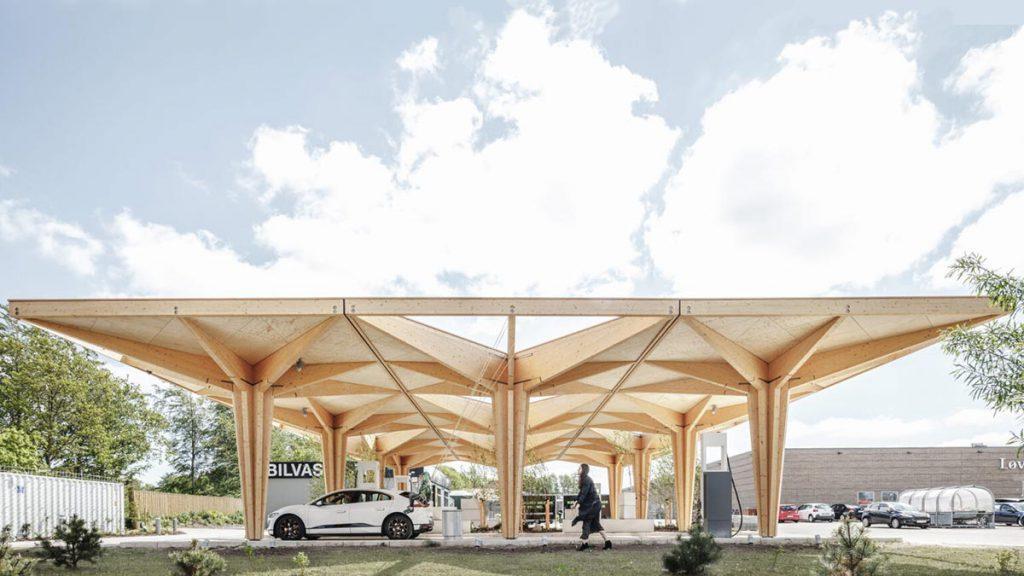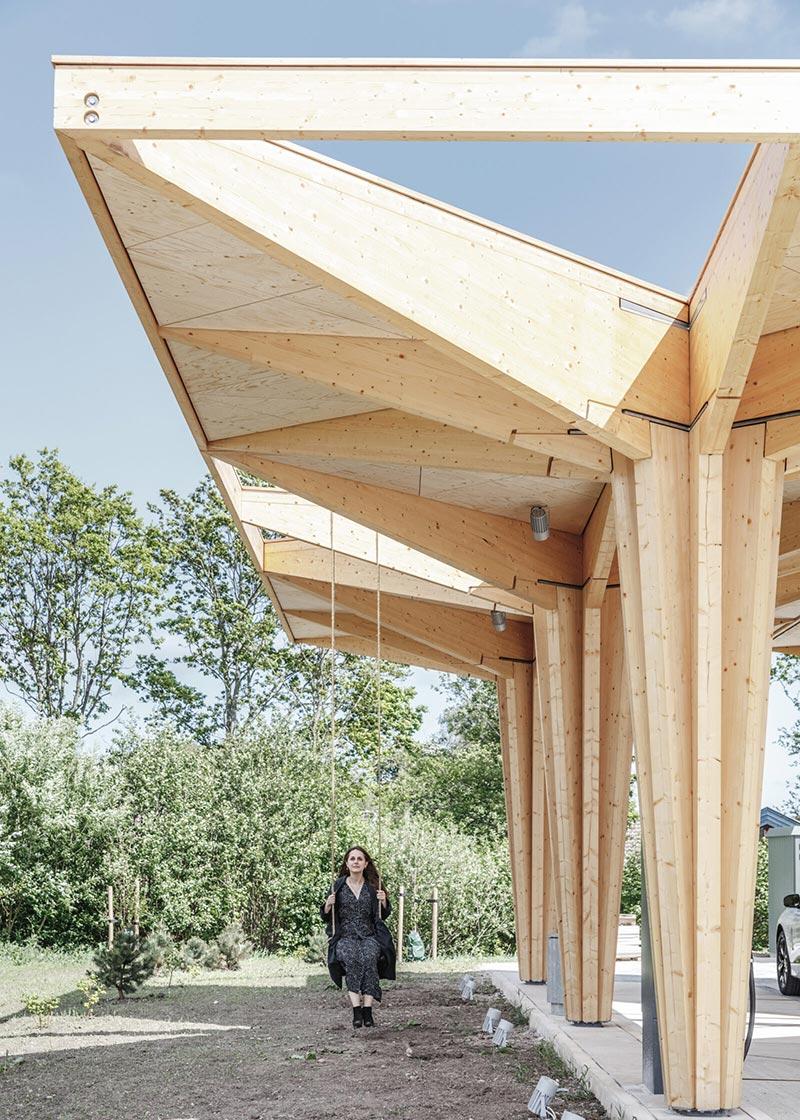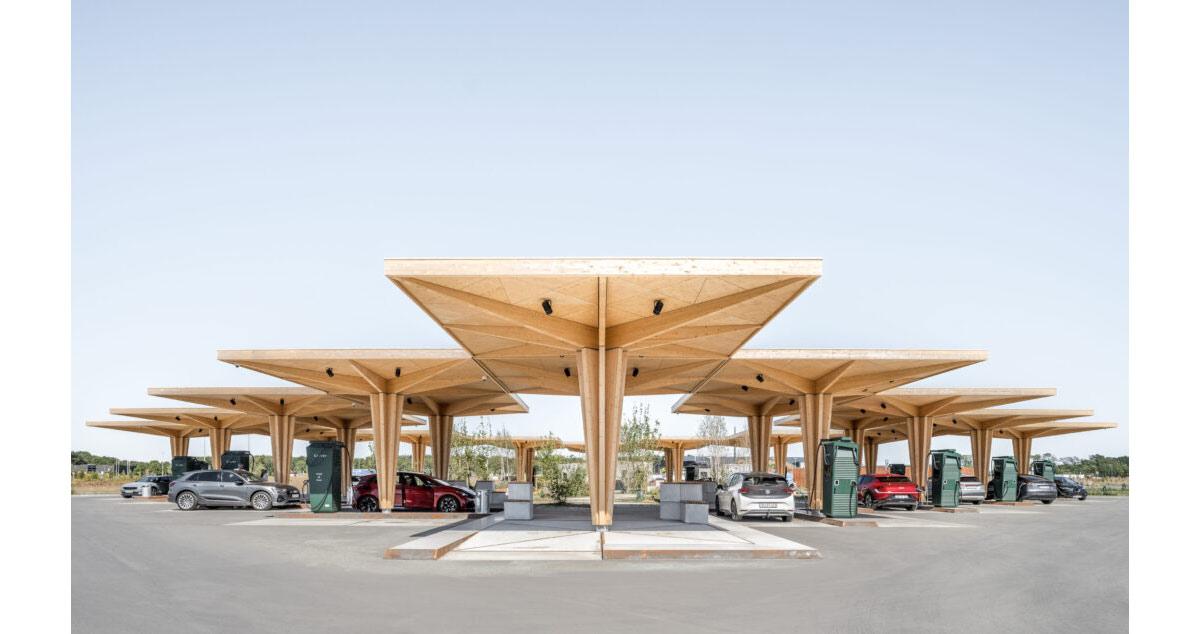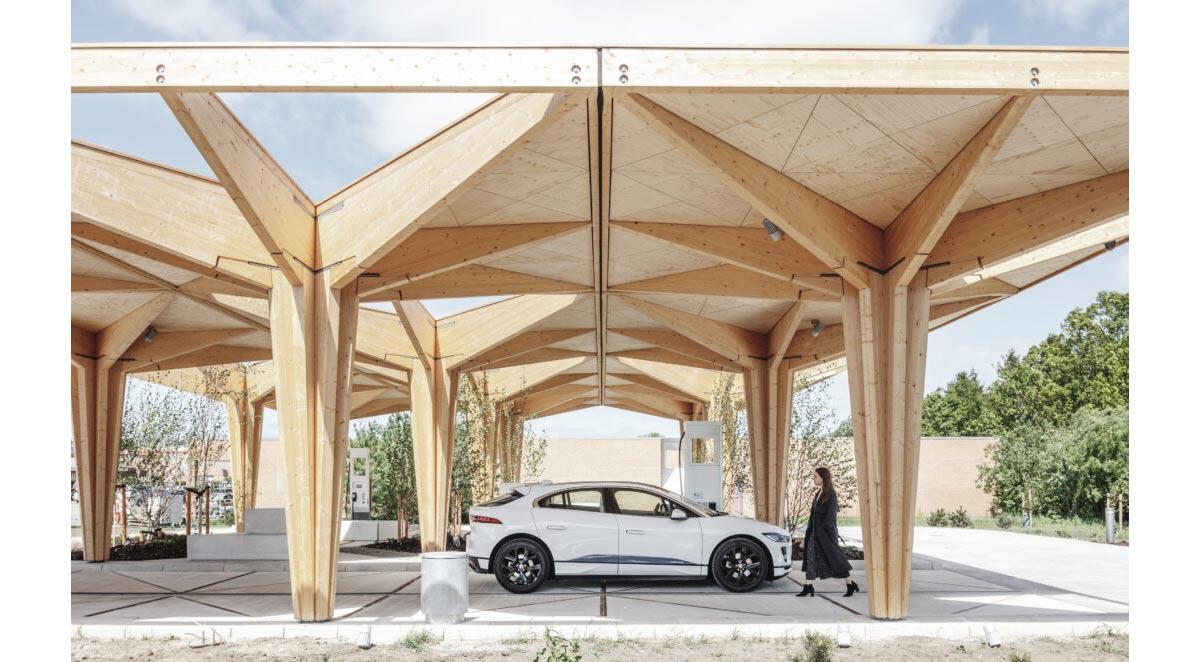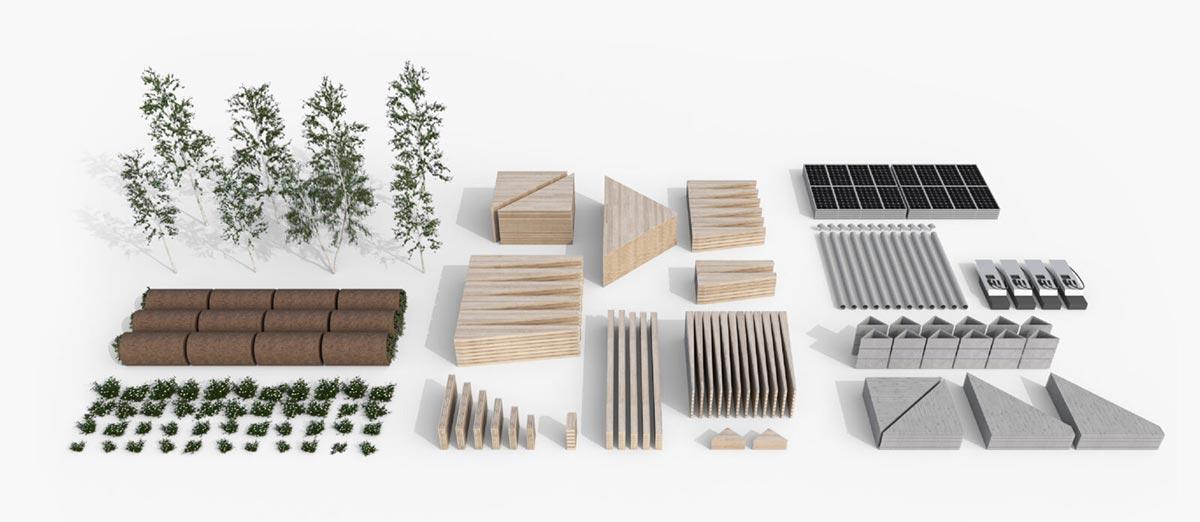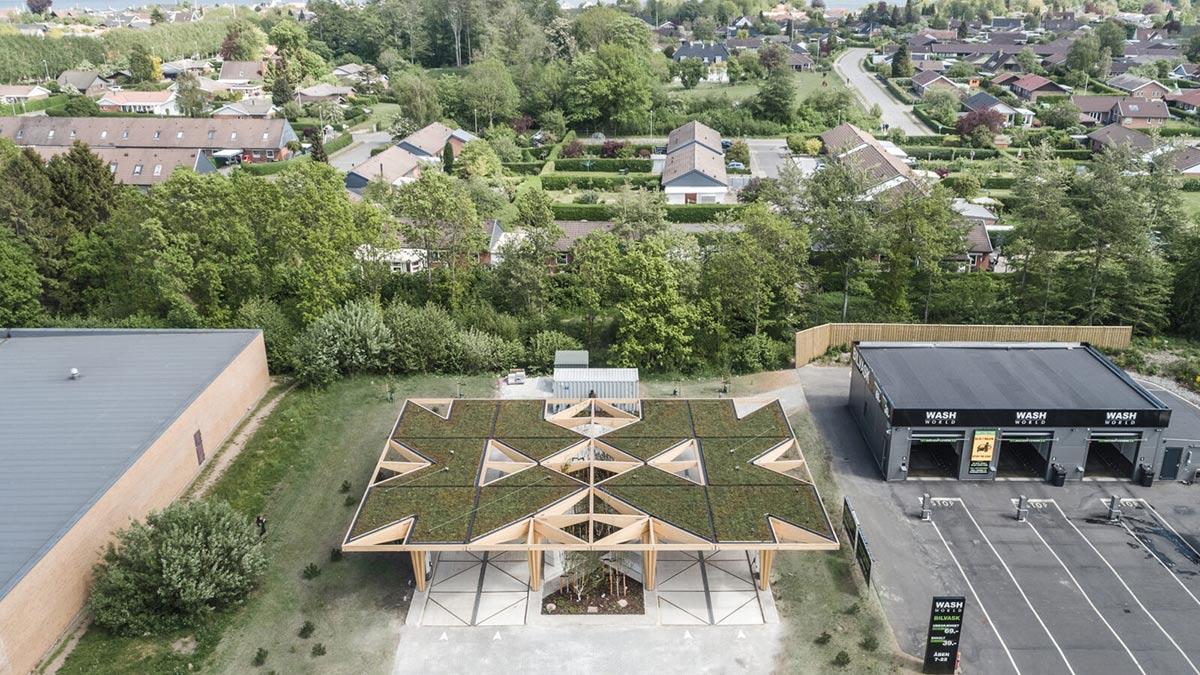Refilling the green way
The filling station of the future will be not just fossil-free, green and clean, but also a place where motorway travellers can relax and recuperate. With this in mind, a modular, ultra-fast charging station built with timber has been designed by Danish architectural studio Cobe.
According to a study by the World Health Organization (WHO) in 2016, 91 percent of the world’s population live in areas where the air pollution exceeds recommended thresholds. The WHO has estimated that 4.2 million people died from the consequences of air pollution that year, with urban regions in Asia and South America being affected especially severely. The most important measures that can be taken to improve air quality in cities include expanding e-mobility and renewable energy.
Denmark has joined Sweden, Finland and Latvia in pursuing pioneering work for energy transitioning. Wind power provided around 47 percent of the country’s total electricity requirements in 2019 alone. And the Danes are intending to increase this share to as high as 90 percent by 2030. So it almost goes without saying that they are pressing ahead with their expansion of e-mobility as well.
Clean, green architecture
This modular concept for ultra-fast charging stations by architects Cobe has provided the prerequisites for rapid and efficient expansion. The design consists of constructional timber elements, surface components and an array of plants for landscaping, with a focus on local biodiversity and resilience.
As this form of travelling per se is green and clean – at least as regards the energy supply in Denmark, the design aspired to reflect this. The architects reckon up their use of timber, as a renewable building material that is known to sequester carbon: “To produce 1 kg of wood, a tree consumes 1.47 kg of CO₂ and releases just over 1 kilogram of O2 into the atmosphere.”
We designed a charging station in natural materials placed in a clean, calm setting with trees and plants that offer people a dose of mindfulness on the motorway.
Dan Stubbergaard, architect and founder of Cobe
Thanks to its modular system, the structure can be scaled up and down as required, and also adapted to suit various contexts and requirements. In addition, the circular design enables easy dismantling at the end of its useful life, without creating any waste.
Travelling by electric car from Norway to Italy
The first green charging stations built from timber were constructed in the Danish cities of Copenhagen, Køge, Odense, Aarhus, Fredericia and Knudshoved. Plans by the commissioning joint venture Powered by E.ON Drive & Clever have included 48 such stations along the Scandinavian motorways.
Together with another 46 stations elsewhere in Europe, an area-wide network is set to link up within a short time. The partner companies declared their aim early on: “We wish to create a network of ultra-fast charging stations that enables EV driving from Norway to Italy.”
Quick charging, mindful living
While drivers of electric vehicles currently have to schedule in 1-5 hours for charging at a conventional facility, and between 30 and 60 minutes at a fast-charger, this new timber refill only takes 15 minutes. The architects have gone further than simply cutting the time involved, though.
By rethinking the entire mobility experience, they have achieved a fundamental makeover of traditionally high-pollution motorway service stations. “With our design we offer EV drivers a welcome break and an opportunity to recharge mentally in a calm oasis,” says architect and Cobe founder Dan Stubbergaard. “We designed a charging station in natural materials placed in a clean, calm setting with trees and plants that offer people a dose of mindfulness on the motorway.”
This low-emission charging station for electric vehicles boasts another ecological trump card. Its greened roof actively counteracts ground sealing, as it absorbs large quantities of water and channels it into the ground via special drainage. Such green showcase projects are evidence that it will actually be possible to transition to clean, green mobility, finally putting an end to the fossil era.
Text: Gertraud Gerst
Translation: Rosemary Bridger-Lippe
Photos: Rasmus Hjortshøj – COAST, Cobe
